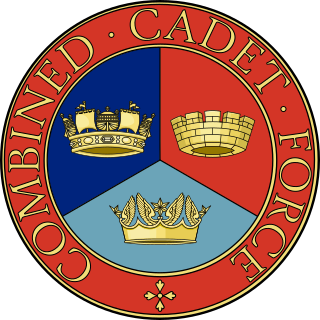
The Combined Cadet Force (CCF) is a youth organisation in the United Kingdom, sponsored by the Ministry of Defence (MOD), which operates in schools, sub divided into Royal Navy, Royal Marines, Army and Royal Air Force sections. Its aim is to "provide a disciplined organisation in a school so that pupils may develop powers of leadership by means of training to promote the qualities of responsibility, self reliance, resourcefulness, endurance and perseverance".
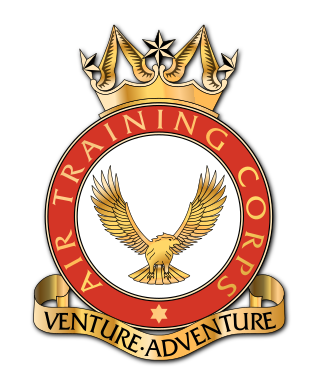
The Air Training Corps (ATC) is a British volunteer youth organisation of the United Kingdom; aligned to, and fostering the knowledge and learning of military values, primarily focussing on military aviation. Part of the Royal Air Force Air Cadets (RAFAC), the ATC is sponsored by the Royal Air Force (RAF) and the wider Ministry of Defence (MoD). The majority of Air Training Corps staff are volunteers, though some staff are paid for full-time work; including Commandant Air Cadets, who is a Royal Air Force officer as part of a Full Term Reserve Service commitment.

The Army Cadet Force (ACF), generally shortened to Army Cadets, is a national youth organisation sponsored by the United Kingdom's Ministry of Defence and the British Army. Along with the Sea Cadet Corps and the Air Training Corps, the ACF make up the Community Cadet Forces. It is a separate organisation from the Combined Cadet Force which provides similar training within principally private schools.
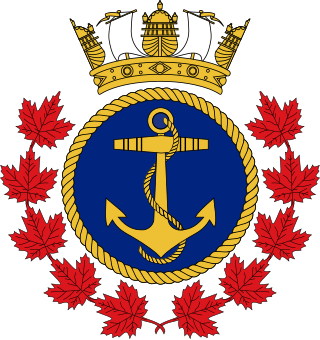
The Royal Canadian Sea Cadets is a Canadian national youth program sponsored by the Canadian Armed Forces and the civilian Navy League of Canada. Administered by the Canadian Forces, the program is funded through the Department of National Defence, with the civilian partner providing support in the local community. Cadets are not members of the Canadian Armed Forces.

The Royal Bermuda Regiment (RBR) is the home defence unit of the British Overseas Territory of Bermuda. It is a single territorial infantry battalion that was formed on the amalgamation in 1965 of two originally voluntary units, the mostly black Bermuda Militia Artillery (BMA) and the almost entirely white Bermuda Rifles, and the only remaining component of the Bermuda Garrison since the 1957 withdrawal of regular units and detachments from Bermuda.

The New Zealand Air Training Corps is one of the three corps in the New Zealand Cadet Forces (NZCF), alongside the New Zealand Sea Cadet Corps and the New Zealand Cadet Corps. It is funded in partnership between the Royal New Zealand Air Force (RNZAF) and local communities. Members are civilians with no obligation to enlist in the New Zealand Defence Force (NZDF). Should a cadet enlist, their service in the ATC cadet does not translate into higher pay, rank, or seniority.
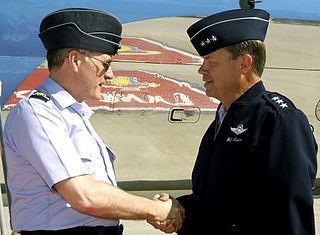
A side cap is a military cap that can be folded flat when not being worn. It is also known as a garrison cap or flight cap in the United States, wedge cap in Canada, or field service cap in the United Kingdom; or in vulgar slang as a cunt cap. In form the side cap is comparable to the glengarry, a folding version of the Scottish military bonnet. It has been associated with various military forces since the middle of the 19th century, as well as various civilian organizations.

The New Zealand Cadet Corps is one of the three corps in the New Zealand Cadet Forces, the other two being the Air Training Corps, and Sea Cadet Corps. There is no reference to the Army within the official title of the NZCC, but an army theme is used for the NZCC. All of its members, from the cadets themselves to the officers and the support committees are civilian volunteers. Members have no obligation to head into the New Zealand Defence Force (NZDF); however, some do choose to join the NZDF.
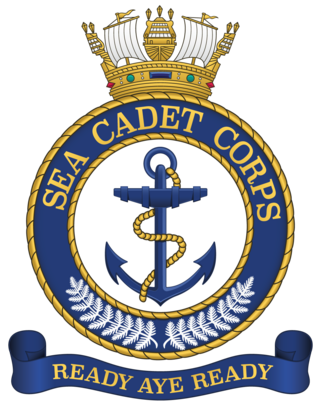
The NewZealandSea Cadet Corps is one of the three corps in the New Zealand Cadet Forces, the other two being the Air Training Corps, and New Zealand Cadet Corps. It is a military-style training organisation for young people between the ages of 13 and 21. Activities include sailing, and boat work, ropework shooting and drill, amongst other activities, many of which involving the other branches of the NZCF. Cadets need to pass an annual swimming test to undertake water-based activities.

The Bermuda Sea Cadet Corps was created in 1966 and registered as a charity under the Bermuda Sea Cadet Association Act, 1968. The first unit had actually been created two years earlier.
The Singapore Armed Forces (SAF) has five rank schemes for active and reservist personnel, with a sixth for the auxiliaries of the SAF Volunteer Corps. The SAF has a unique rank structure as an integrated force, ranks are the same in the Singapore Army, the Republic of Singapore Navy (RSN), the Republic of Singapore Air Force (RSAF), and the Digital and Intelligence Service (DIS).
The Royal Belgian Sea Cadet Corps is a Belgian non-profit youth organisation whose purpose is to stimulate teamwork and discipline in individuals from the age of 12, while teaching other important skills and values such as first aid, navigation and linguistic skills, operating a vessel, military drill and much more. The organization receives support from the Belgian Ministry of Defense.
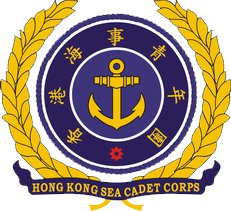
Hong Kong Sea Cadet Corps is a youth organization based in Hong Kong and formed in 1968 by former Royal Naval Reserve officers by the creation of Hong Kong Law
The Hong Kong Adventure Corps is a voluntary uniformed group subsidised by the Hong Kong government and the Hong Kong Jockey Club. It was created in 1995 with ties to the British Army's Army Cadet Force and Combined Cadet Force. Like the Hong Kong Sea Cadet Corps and Hong Kong Air Cadet Corps, the HKAC exists to serve the Hong Kong community. The HKAC's values are based in those of the British Army, providing a tough and challenging training with a distinctive military tone of discipline and esprit de corps.
Royal Marines Cadets (SCC) are part of the Sea Cadets, a United Kingdom uniformed youth organization was formed in 1955 by the then Commandant General Royal Marines – General Sir Campbell Richard Hardy, KCB, CBE, DSO & Bar. The Royal Marines Cadets of the SCC specialise in activities such as orienteering, fieldcraft, and weapon handling.
Cadet Vocational College is an education charity that provides vocational qualifications to members of uniformed youth organisations and their adult instructors.

St. John Ambulance of Malaysia is a Malaysian-based, non-profit statutory body dedicated to the works of humanity and charity for the relief of persons in sickness, distress, suffering or danger without any distinction of race, class, colour or creed. With a history stretching back over a century, SJAM forms part of the wider St. John Ambulance, a foundation of the Venerable Order of Saint John with presence in 41 sovereign states, dependencies, autonomies or territories.
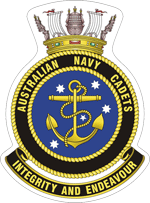
The Australian Navy Cadets (ANC) is a leading national youth development organisation, with the character and values of the Australian Navy, founded on a strong community partnership, fostering and supporting an ongoing interest in the Australian Navy.
The following table displays the ranks of the Community Cadet Forces, the Combined Cadet Force, the Volunteer Cadet Corps, and the Girls Venture Corps Air Cadets. This table is based on equivalent Rank Structures within the Cadet Forces as detailed in regulations of the SCC, RMC, and the Air Cadets.
The Volunteer Cadet Corps (VCC) is a national youth organisation managed by the United Kingdom's Royal Navy and sponsored by the UK's Ministry of Defence. The VCC comprises:





























































